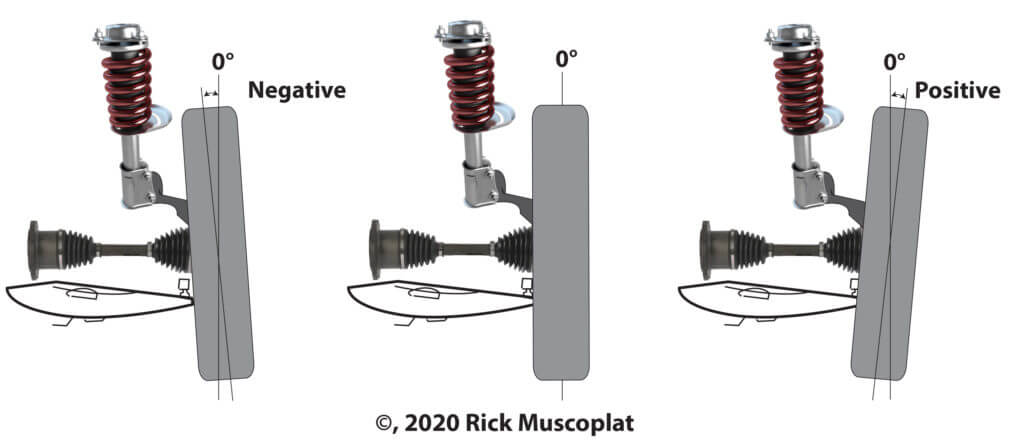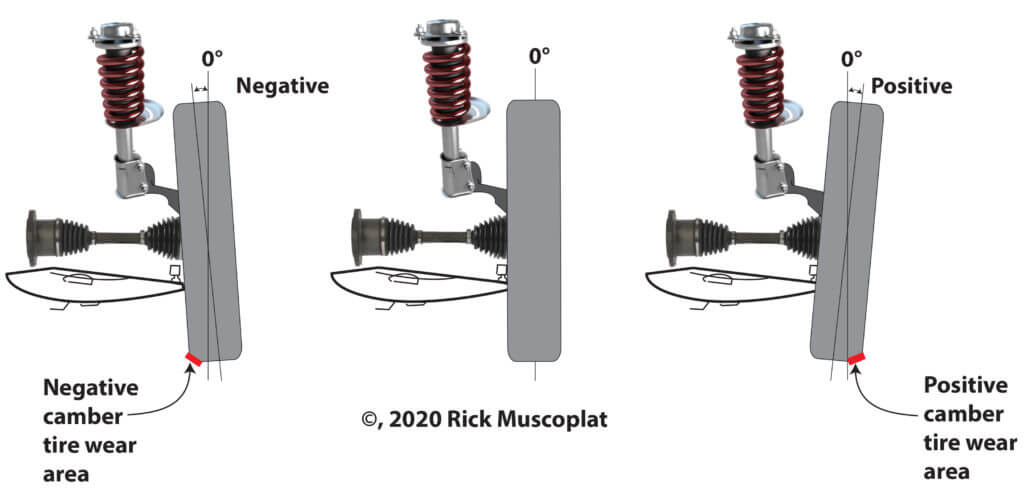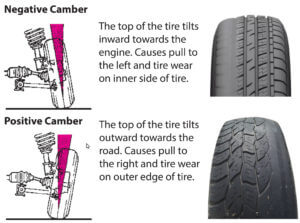How Camber Angle Affects Tire Wear
Camber Angle has a direct impact on tire wear and can cause a pull to one side
Camber angle is defined as the inward or outward tilt of the tire when compared with a true vertical line running through the spindle (see image below). Carmakers usually align new vehicles with a slight negative camber so the vehicle understeers a bit.
Positive Camber—When the top of the tire/wheel is pointed out
Negative Camber— When the top of the tire/wheel is pointed out

Effect of camber alignment angle on tire wear
When the camber alignment angle is out of spec, the tire will wear on either the inner or outer tire shoulder. depending on whether the camber is too positive or negative.
In addition, you’ll have reduced handling/stability because less tire is in contact with the road. This loss of grip negatively impacts handling, braking performance, and stability.
The effect of improper camber angle on driving and handling
Excessive camber can cause the vehicle to pull to one side. This happens because the tire/wheel is tilted so it’s much like you’re driving on an ice cream cone. If you’re constantly correcting your steering in one direction, excessive camber is a common cause.


How is camber adjusted during an alignment
On a vehicle equipped with a McPherson strut suspension, camber is adjusted at the point where the strut connects to the steering knuckle or where the strut mount connects to the strut tower.
On short arm, long arm steering system, camber is adjusted by inserting or removing shims in the space where the control arm connects to the frame of the vehicle.
What causes camber angle to change or be out of spec?
There are several common causes that can knock a vehicle out of its proper alignment specification:
1. Hitting potholes or curbs – Striking objects in the road can bend the control arm, strut and even the steering knuckle. That would change camber. Hitting a curb is the most common cause of improper camber angle.
2. Worn suspension parts – As steering and suspension components like ball joints, bushings, and control arm bushings wear over time, it allows more movement and that can change camber.
3. Improper repairs or installations – If a damaged component is replaced incorrectly, neighboring geometry may be thrown off.
The fix for any alignment issue is to get a proper wheel alignment service. This procedure uses an alignment rack or sensors to measure alignment angles. Adjustments are then made with precision equipment to dial the wheels back to the intended specification. This restores proper handling, safety, and tire wear.
©, 2020 Rick Muscoplat
Posted on by Rick Muscoplat